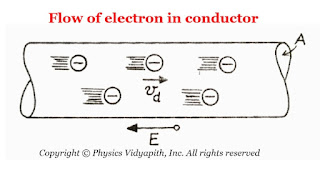Posts
Showing posts from May, 2022
Posted by
Physics Vidyapith
Displacement Current
- Get link
- Other Apps
Posted by
Physics Vidyapith
Mechanism of Flow of Charge in Metals: Free Electron Gas Theory
- Get link
- Other Apps
Posted by
Physics Vidyapith
Derivation of Ohm's Law
- Get link
- Other Apps

Posted by
Physics Vidyapith
Relation between electric current and drift velocity
- Get link
- Other Apps